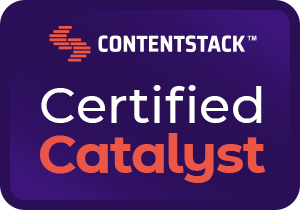Speed is Mission Critical
2019-07-17
Photo by Emil Jarfelt on Unsplash
After many years in the business of building websites, time after time we are asked some variation of: “what is the most important factor to consider when building, re-designing, or optimizing a web experience?” We would be hard pressed to tell you that any one factor trumps any of the many considerations to take into account when building a digital experience. That being said, there is one factor that transcends the disciplines of marketing, user experience, and development. It’s the one thing that google bots and your users cringe at universally--a slow website.
More often than not, the tension between building a fast site and a beautiful site ends up pushing us toward sluggishness. The increasing demand from users for interactive media and gorgeous photography is costly to performance. This is made even worse when businesses become dependent on older, monolithic e-commerce and content management systems of the past. This puts us in a tenuous balancing act of what matters more, another few milliseconds of load time or that vivid, expressive imagery? Maybe it’s that video you spent thousands producing for your brand, or that wonderfully interactive experience you saw on a competitor’s site. What we have found more often than not, is these tradeoffs don’t have to be a zero sum game. Oftentimes it’s the technology the business feels bound to that is holding it back from having a fast AND beautiful site. But first, let’s zoom out for a moment and see how speed affects not just your user’s experience, but your discoverability by search engines.
Search engines run the digital world. According to Google, we are now within the mobile age. There are fundamental rank factors, that access the value of the experience your website provides to the human consumer. Your website should accommodate all walks of life and be accessible to anyone that visits it. In this sense Google is not just assessing the effectiveness information but also the delivery of that information. When it comes to ranking deliverability, especially on mobile, there is one metric that has risen to prominence, speed.
With Google’s algorithm now ranking your mobile performance first, you can guarantee, despite all of your best SEO efforts of the past, if the site is slow, it’s not going to perform as well as you hope. Remember, every website has two primary customers, the human and the robot, and they are dependent upon one another. If your rank drops, so does your discoverability. The robot has zero emotion. It cannot see your beautiful site design nor the hard work you put into your photography or video assets--it just sees heavy network calls and slow time to render. It has no idea how amazing your retargeting strategy is, only your time on site metrics and conversion performance.
Google is so dedicated to mobile speed that they created their own open source specification for building mobile optimized web pages. Google refers to this as AMP ( Accelerated Mobile Pages) and provides a code base for sites to utilize as well as all the justification in the world for its requirement. In reality, we do not need to use Google's AMP specification as long as we deliver on a speedy experience for all users. AMP is just a tool to help get us there, but it’s not the only way.
Speed is not just important for SEO and discoverability. There have been numerous studies done now that showcase the importance of speed as it relates to your users bounce and conversion rates. As we can see in the following study on Section’s blog bounce rate greatly increases for real users for every second of increase that your pages take to load. When page speed is 2 seconds bounce rates average around 9.6%, compared to 32.3% when page speed hits 7 seconds. This adds insult to injury because not only was your site harder to discover, it was too slow to tolerate. Users are also more likely to spend more time on site when the load between pages is quick and seamless. In the same study, Section found users visited an average of 5.6 more pages when load times were 2 seconds as opposed to 7 seconds. This shows as little as five seconds is critical to your user retention.

From Section.io
With all this talk about heavy assets it’s a common thought that brands have to dump all of their gorgeous assets in favor of super-light, text-only experiences. This is not the case. Today we have incredible infrastructure for content delivery that can distribute assets around the world and serve them at lightning speed. With today's content delivery infrastructure there is no excuse. The only thing holding most businesses back is reliance on the old self-hosted, monolithic platforms of the past like Wordpress, Joomla, Shopify and Magento. Things like performant content distribution networks, microservices, and cloud infrastructure were not available at an affordable cost to most--this era is now over.
Enter the headless content management system. We advocate for breaking up the monolithic structures of yore in favor of a microservices approach. This doesn’t mean we throw out all of the platforms of the past--it just means we want to configure them differently. Instead of building your website on top of a platform like Shopify, we simply interact with its API for transactions. Instead of self-hosted assets and content, we use an optimized content infrastructure like Contentful to serve media and content around the world using state of the art content distribution networks. Instead of serving your entire website from the same sluggish server we serve only what’s needed from a location that is as close to the current user as possible. You can have a site rich with media and have it blow the footer off of your competitors in speed. This makes both Google’s bots and your users happy.





